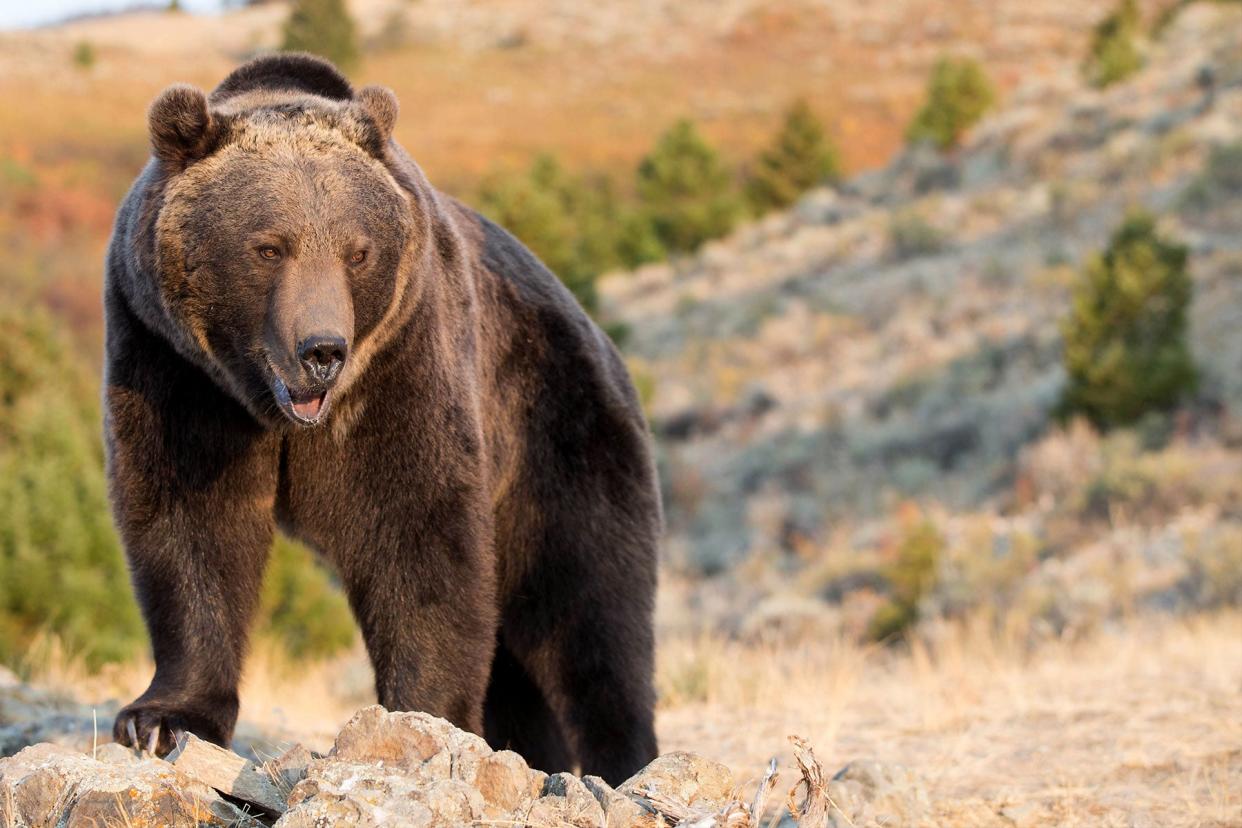Grizzly Bear Mauls Surveyor in Wyoming Backcountry

On the morning of Saturday, August 5, a grizzly bear attacked a man who was doing research in Wyoming’s Shoshone National Forest. The surveyor, whose name hasn’t been released, was injured but survived the attack. According to the Wyoming Game & Fish Department (WGFD), the man didn’t have time to deploy his bear spray, but he did manage to avoid life threatening injury by playing dead while covering his neck and head.
“First and foremost we want to wish the individual a quick and successful recovery,” stated Jason Hunter, WGFD regional wildlife supervisor in a recent press release. “His split-second reaction to this sudden, defensive encounter with a bear was the best possible response to this unfortunate situation.”
After the attack, the man hiked out of the isolated backcountry near Dubois, Wyoming and called 911 for help. Investigators interviewed him before he went to the hospital then used a drone to search for the grizzly. Because the attack was considered defensive rather than predatory, the bear won’t be relocated or killed if found. The animal hasn’t been located as of this writing.
A woman was killed by a grizzly a few weeks ago in the same region. That attack involved an early morning trail runner near West Yellowstone, Montana who surprised a grizzly sow with at least one cub. Wildlife agents looked for the bear involved for a few days, but it was never found.
Despite the attention given to grizzly attacks, encounters are still rare in the Greater Yellowstone Ecosystem, which includes Yellowstone and Grand Teton National Parks plus portions of Idaho, Montana, and Wyoming. The odds of being attacked by a grizzly in Yellowstone National Park are 1 in 2.7 million visits. While those chances are slim, the probability has risen since the 1970s when grizzlies nearly disappeared in the Lower 48.
“People living, working and recreating in grizzly bear country can do a lot to prevent bear conflicts or an attack, but there will always be an element of chance involved,” Frank van Manen, U.S. Geological Survey Interagency Grizzly Bear Study Team supervisory research wildlife biologist told Cowboy State Daily. “Even if someone is very experienced and does everything right, there is unfortunately always a possibility that an attack cannot be averted.”
Read Next: Watch an Alaskan Brown Bear Take Down a Moose in the Middle of a River
Greater Yellowstone grizzlies are federally protected by the Endangered Species Act and have been since 1975. In the last half century the population has expanded from less than 200 in the 1980s to more than 1,000 today.

